Welcome to On Verticality. This blog explores the innate human need to escape the surface of the earth, and our struggles to do so throughout history. If you’re new here, a good place to start is the Theory of Verticality section or the Introduction to Verticality. If you want to receive updates on what’s new with the blog, you can use the Subscribe page to sign up. Thanks for visiting!
Click to filter posts by the three main subjects for the blog : Architecture, Flight and Mountains.

The Verticality of Roller Coasters
One of the most visceral sensations a human can experience is a sudden fall. This quick, downward acceleration of the human body can evoke feelings of terror if it’s unplanned or unwanted, or feelings of thrill and delight when it’s expected. For many of us, the sudden pull of gravity conjures up all these feelings at once. Roller coasters tap into this concept, and they meticulously curate it in order to maximize these feelings for their riders. A ride on a roller coaster pushes and pulls your body in myriad different directions, allowing a rider to experience gravity-like forces in many different directions. It’s an experience rooted in verticality, which is what gives them such appeal.
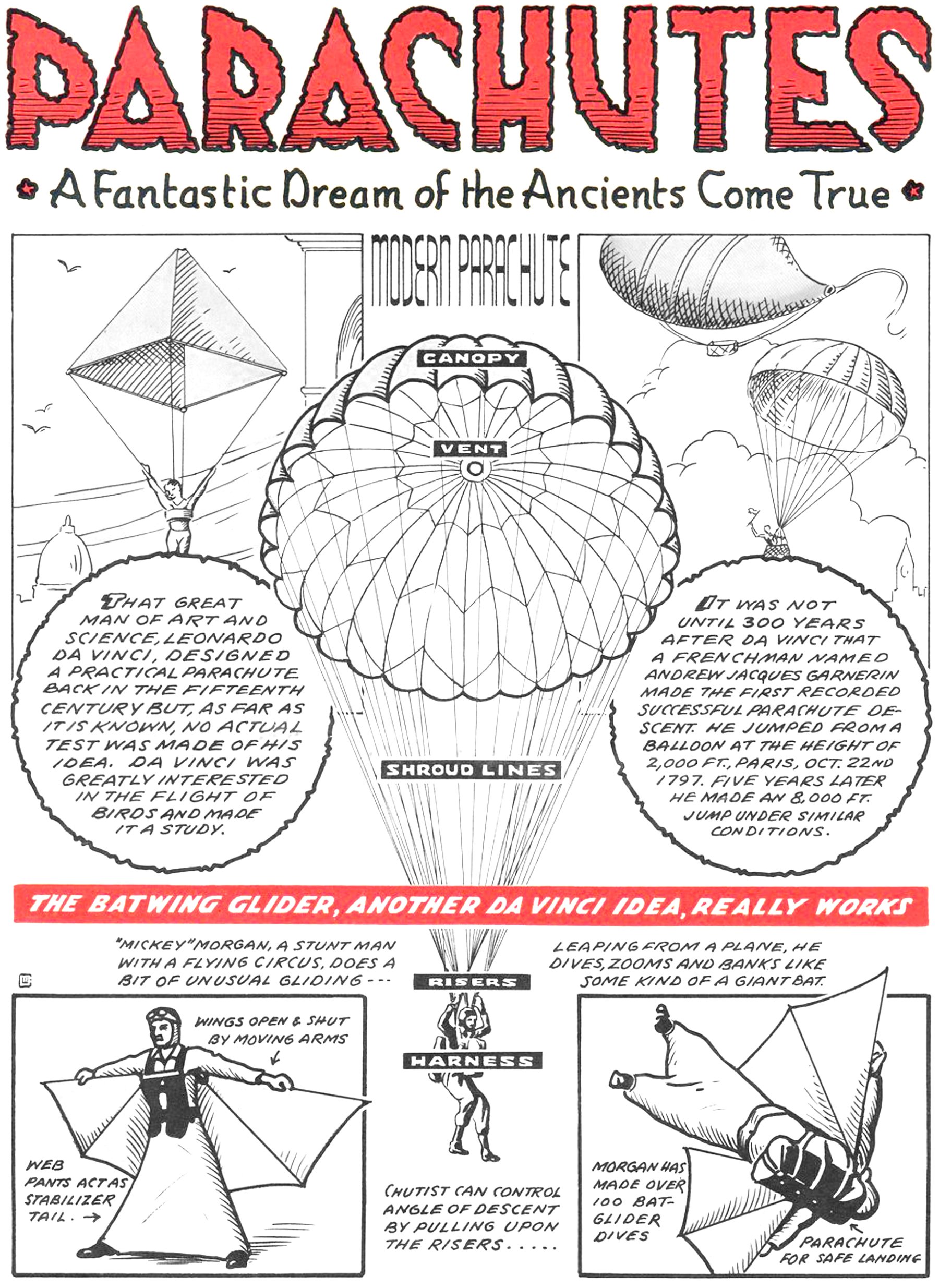
Parachutes : A Fantastic Dream of the Ancients Come True
Pictured above is a page from a War Heroes comic book from 1943. It features a few examples of parachutes and a flying suit called the Batwing Glider. At the center of the page is a modern parachute, complete with its canopy, vent, shroud lines, risers and harness. Flanking this drawing are two historical examples of parachutes. The first is a sketch from Leonardo da Vinci’s notebooks circa 1495, and the second is the world’s first successful parachute descent by André-Jacques Garnerin in 1797. This triad presents a concise, albeit incomplete history of parachute design, but it does do a good job of visually connecting a modern parachute to its ancestors.
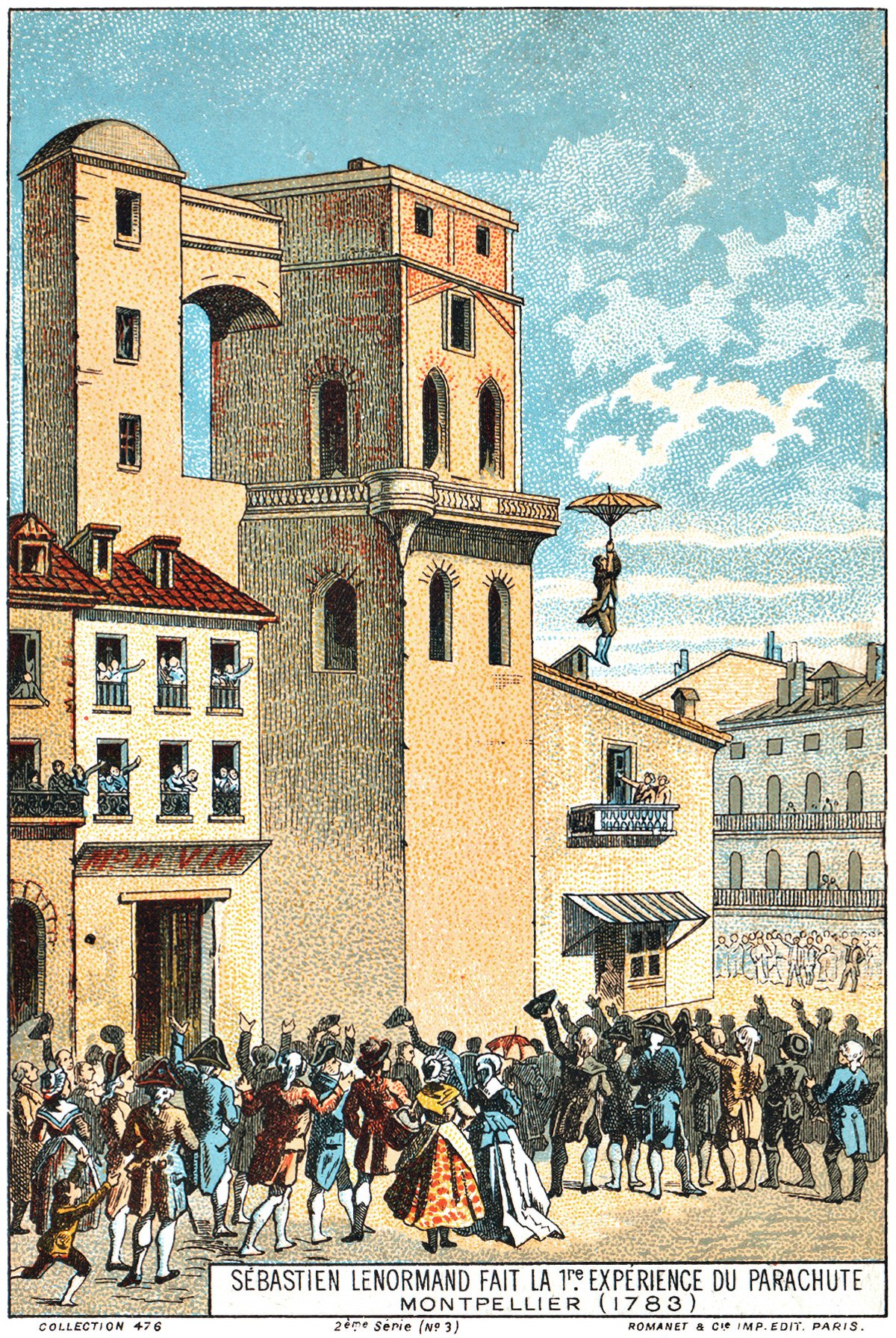
Sébastien Lenormand’s First Parachuting Attempt
Pictured above is a French illustration from 1890, showing Louis-Sébastien Lenormand leaping from a building with his parachute in Montpellier, France in 1783. He jumped from the Montpellier Observatory in front of a large crowd of onlookers who were hoping to witness the first-ever successful parachute demonstration. The caption reads Sébastien Lenormand Fait la 1re Expérience du Parachute, which means Sébastien Lenormand’s First Parachuting Attempt.
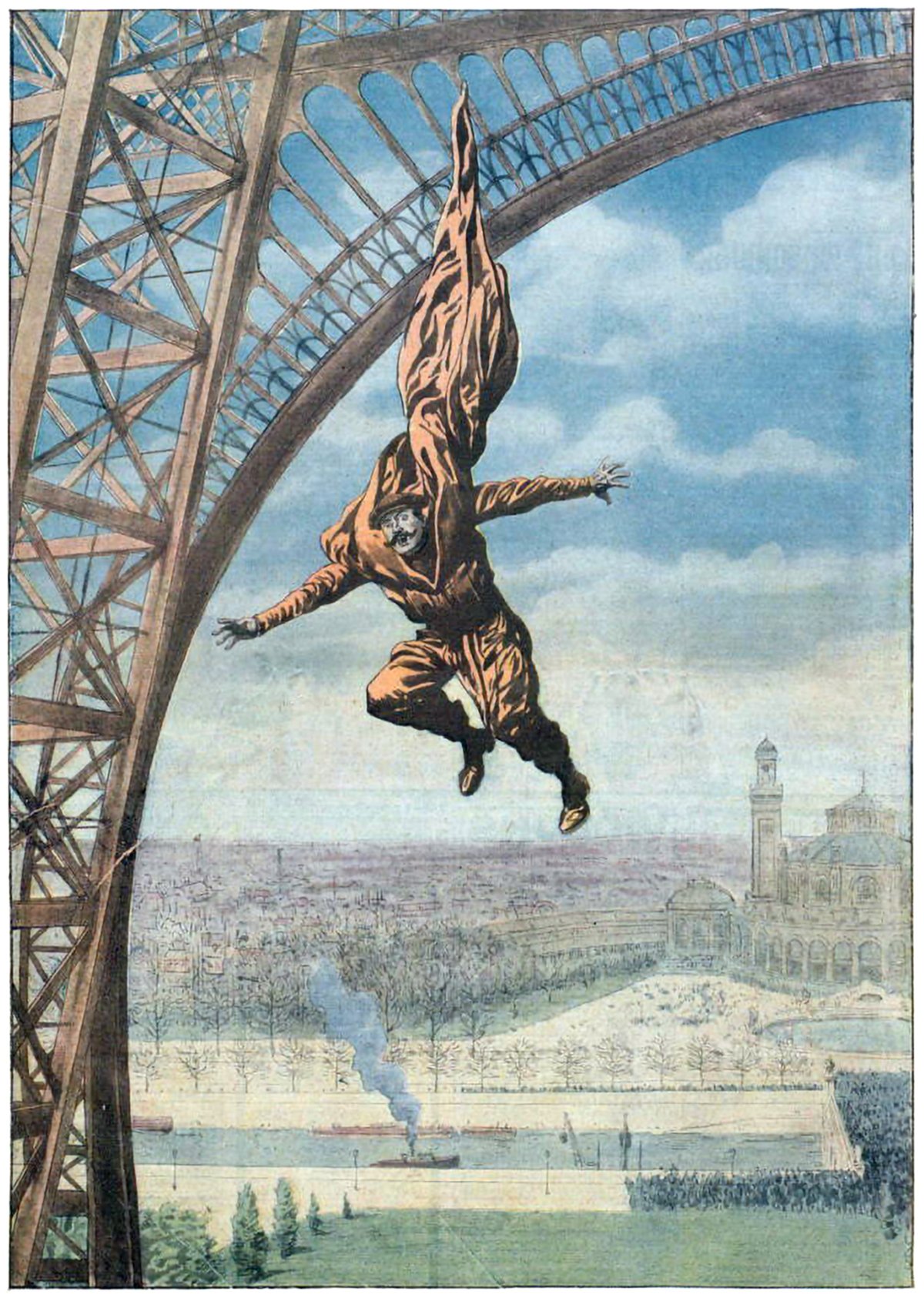
Franz Reichelt’s Fatal Leap from the Eiffel Tower
Pictured above is an illustration showing Franz Reichelt, a French tailor and inventor who was an early pioneer of parachuting. He had developed a wearable suit for pilots that would expand into a parachute should they need to eject themselves from their aircraft. He tested the design from the first deck of the Eiffel Tower in 1912, falling to his death after the parachute failed to open properly.
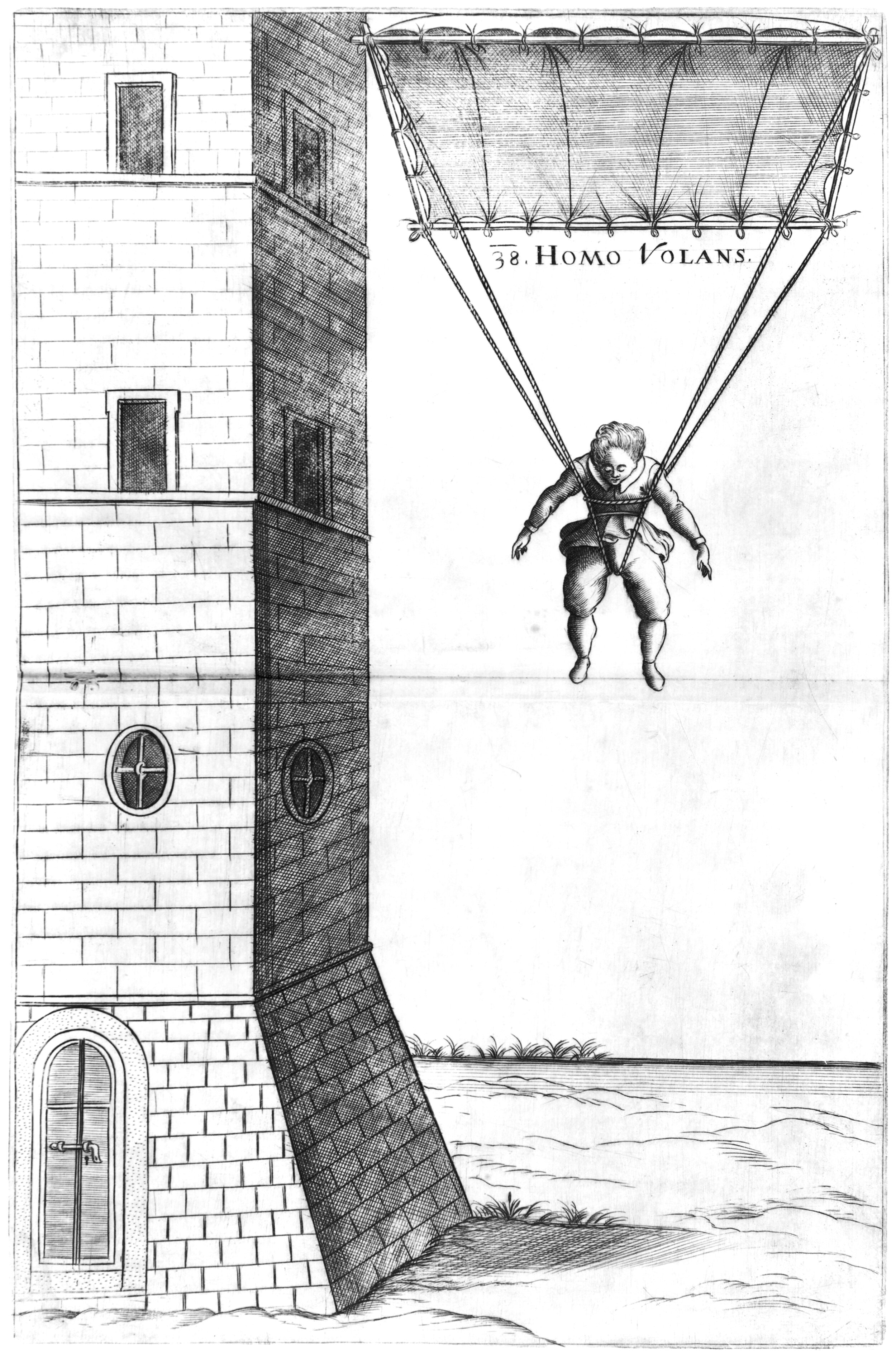
How to Fall : An Early History of the Parachute
Throughout the history of human flight attempts, the number one cause of death and injury has been a fall from a high place. In the early days of flight attempts, most examples involved jumping from a high perch and trying to stay in the aloft for as long as possible. Alongside these attempts at flight, others were concerned with the art of falling. How could a person leap from a high place and return to the surface safely? The resulting paths of thought make up the early history of the parachute.
“O human race, born to fly upward, wherefore at a little wind dost thou so fall?”
-From The Divine Comedy, by Dante Alighieri, Italian poet and philosopher, 1265-1321.

L’Homme Volant
Pictured above is the cover of Le Petit Parisien from 9 September 1894. It shows German aviation pioneer Otto Lilienthal dangling from a building cornice, with a crowd of onlookers below. According to the paper, the illustration was drawn from a photograph which was taken a few days earlier in Frankfurt, Germany.
‘We lack the wings to fly, but will always have the strength to fall.’
-Paul Claudel, French poet, 1868-1955
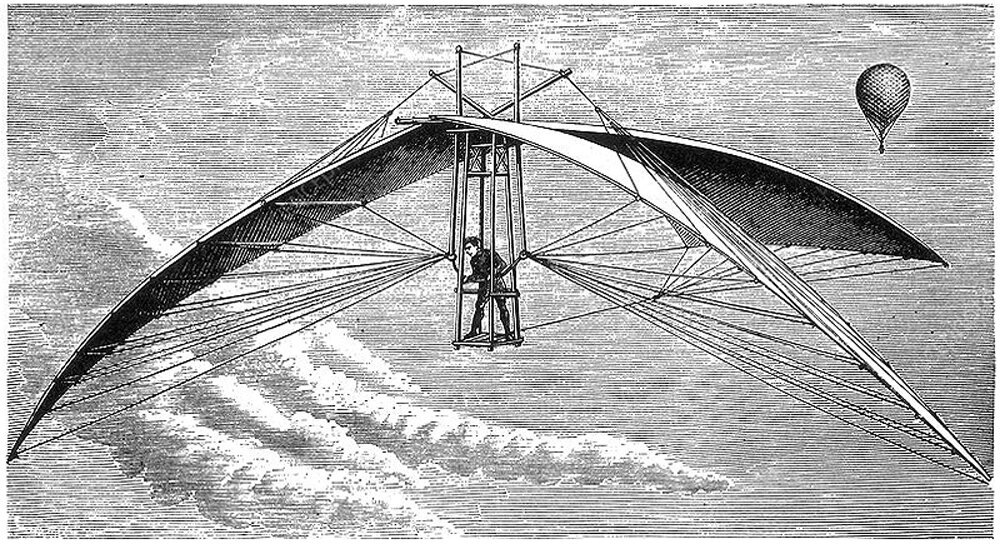
Vincent de Groof's Ornithopter
This is Vincent de Groof’s design for an ornithopter, built and tested in Bruges and London in the 1870’s. Details about de Groof’s life are sketchy, and newspaper articles from his day tend to contradict themselves. One consistent fact is that he was called The Flying Man. His goal was to achieve flight, and he believed it was possible for a human to fly by imitating the flight of a bird.
